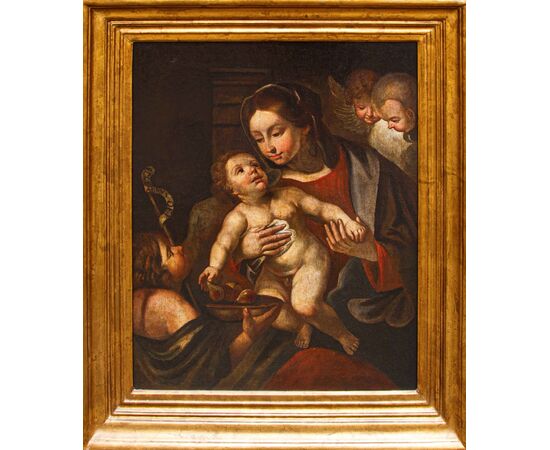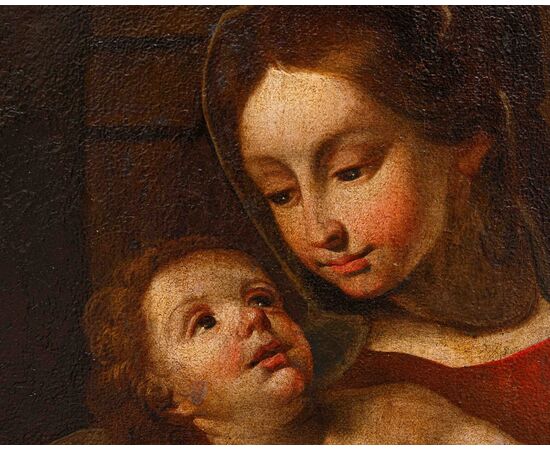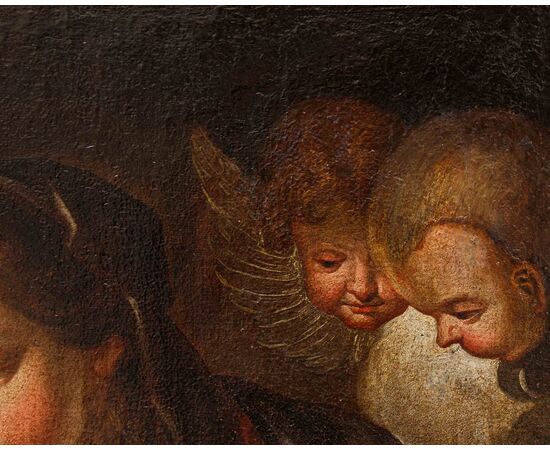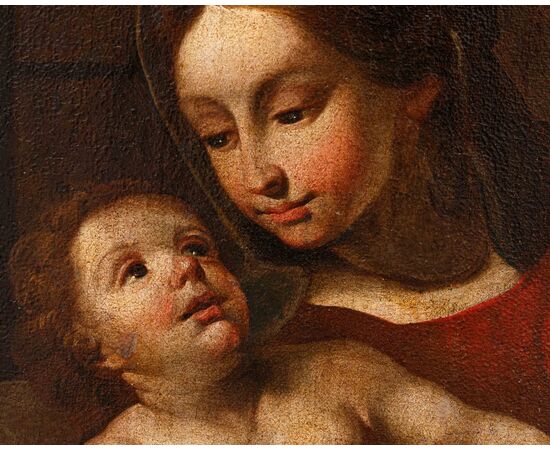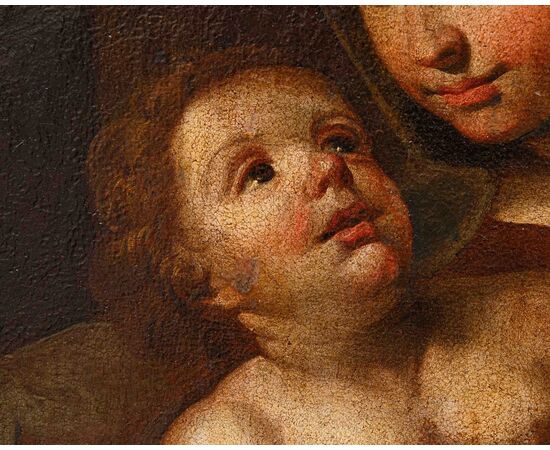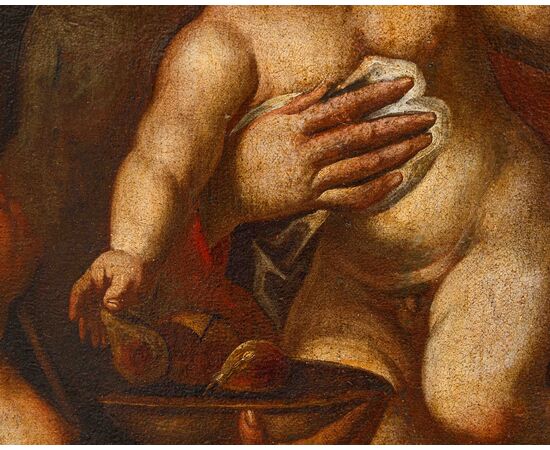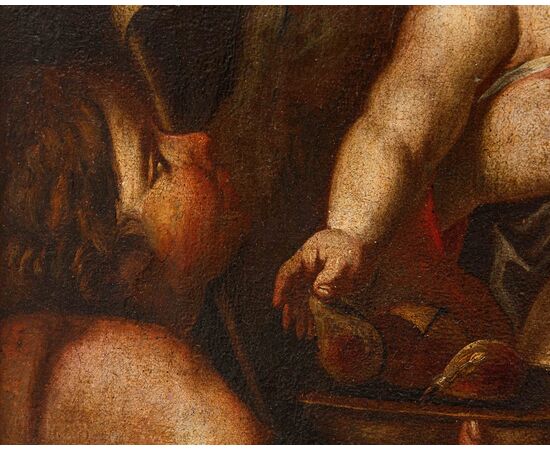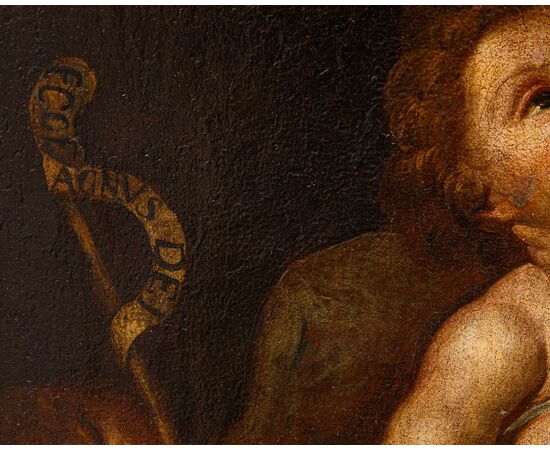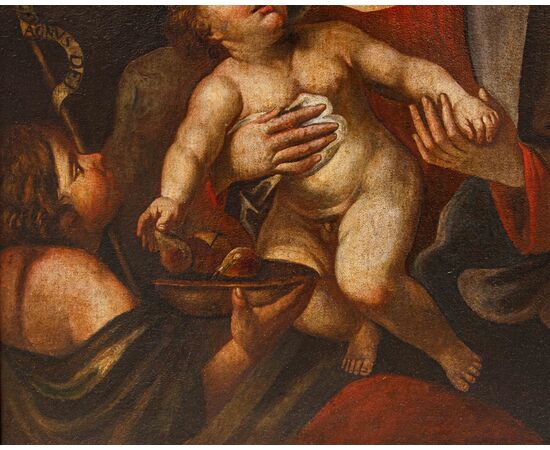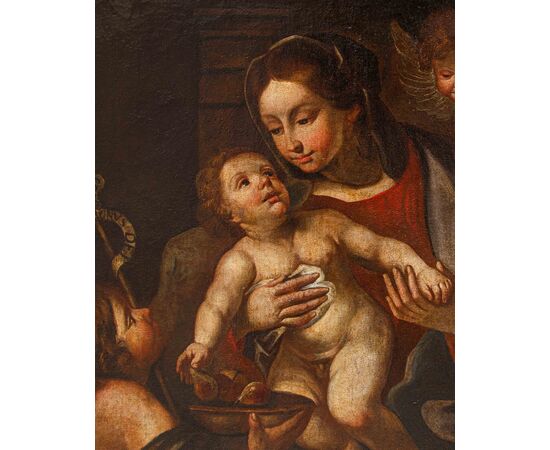Italian School, 17th century, Madonna with Child and Saint John the Baptist
Italian School, 17th century
Madonna with Child and Saint John the Baptist
Oil on canvas, 86 x 99 cm
Framed, 113 x 93 cm
The 17th-century painting depicts the Virgin presenting the Divine Child to the young Saint John the Baptist, shown with his cardinal attributes: the cane staff with cruciform culmination and the sheepskin resting on his shoulders, exemplifying his future hermitage in the desert. Of particular emotional intensity in the Baroque painting is the intimate relationship between the mother and child, who exchange a loving glance. The Madonna gently supports him, holding his little hand, in a gesture that gives the composition a profound humanity and a sense of realism and truth that denotes the entire line of development of 17th-century Italian painting. Saint John the Baptist offers baby Jesus a tray of pears, and Christ prepares to grasp one by the stem. In the context of Christianity, the pear, although not one of the most widespread or explicitly mentioned symbols in the Scriptures like, for example, the grape or the apple, has assumed various positive values in art and sacred iconography, especially from the Middle Ages and in the Renaissance. Usually this symbolizes Divine Goodness and God's profound Love for his faithful: The intrinsic sweetness of the pear fruit has made it a symbol of the goodness of the Creator and the love of the Lord for humanity. The symbolism of the pear often recurs in representations of the Virgin Mary with the Child Jesus. In this context, it symbolizes the deep love and affection between Mother and Son, and more generally God's love for humanity through the figure of Christ. Linked to the concept of divine love, the pear can also represent Redemption, the salvation offered by Christ to humanity. It is interesting to note how the symbolism of the pear is almost exclusively positive in sacred art, distinguishing itself from other fruits that may have more ambivalent connotations (such as the apple). Its presence in paintings, particularly Marian ones, is a subtle reminder of concepts of love, grace, and salvation.

